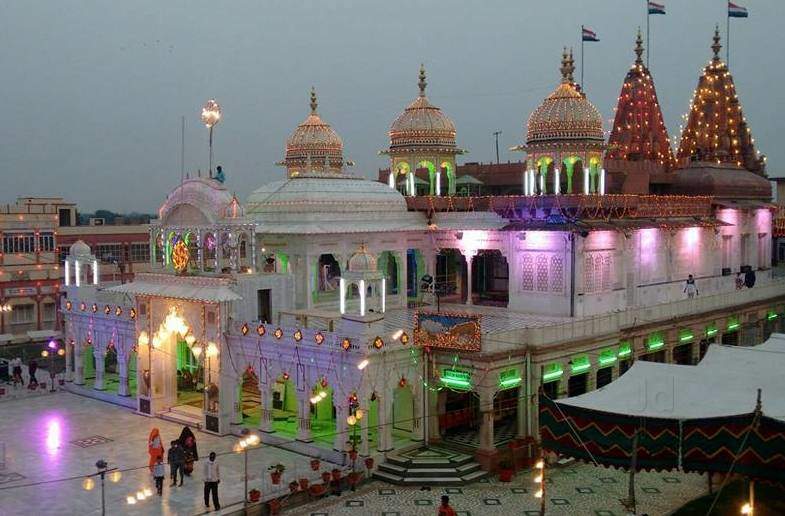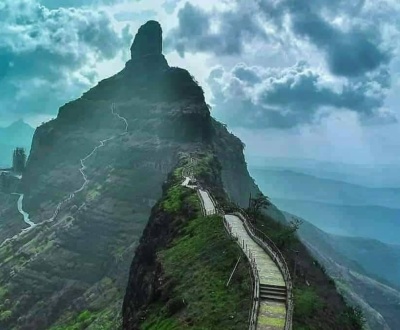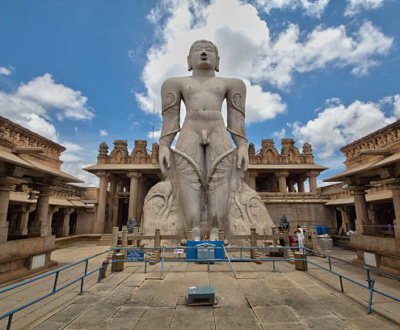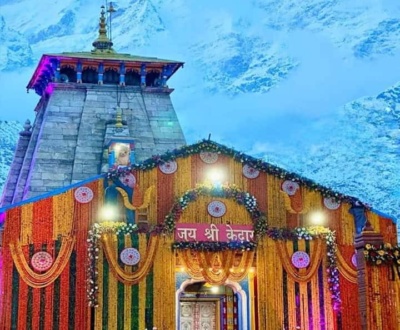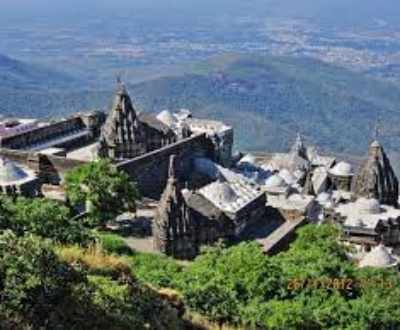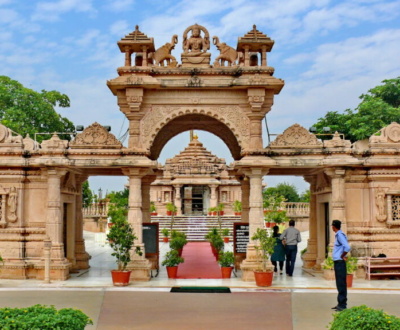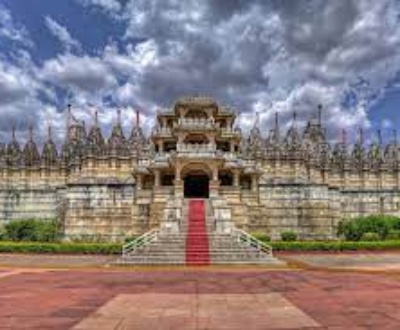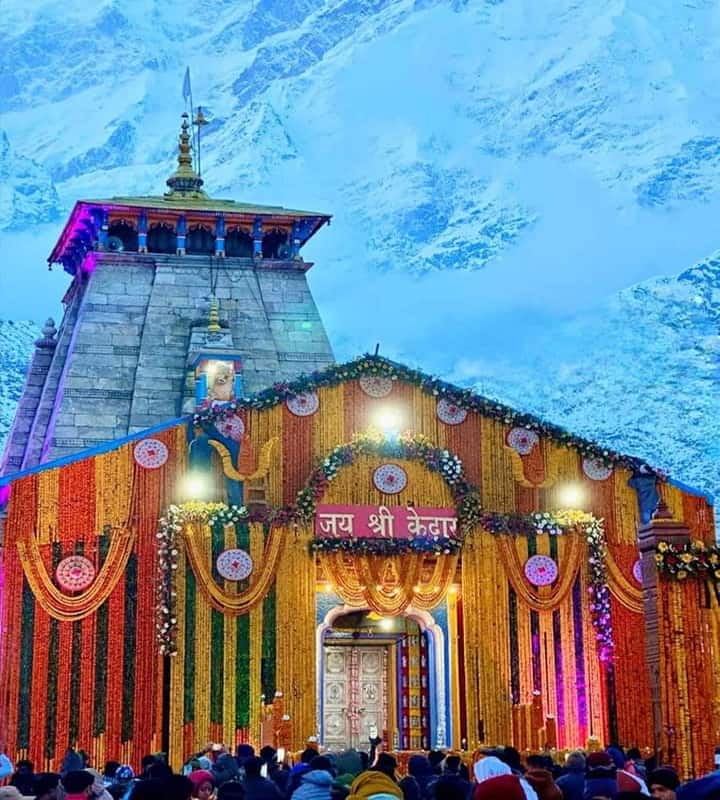Madhya Pradesh is home to several famous Jain temples that are known for their architectural beauty and religious significance. Here are some of the notable Jain temples in Madhya Pradesh
1. Gwalior Jain Temple
This temple complex is located in Gwalior and is dedicated to Lord Parshvanath, the 23rd Jain Tirthankara. The temple is known for its stunning architecture and intricate carvings.
- Name: The temple is often referred to as the Gwalior Jain Temple, but it is dedicated to Lord Parshvanath, the 23rd Tirthankara of Jainism. Therefore, it is also known as the Parshvanath Temple.
- Location: The Gwalior Jain Temple is located in the Gwalior Fort complex, which is a historic fortification in the city of Gwalior. It is situated atop a hill and offers panoramic views of the city.
- Architecture: The temple is renowned for its architectural beauty and intricate carvings. It features a mix of Hindu and Jain architectural styles. The temple is adorned with delicate sculptures, ornate pillars, and detailed artwork that reflects the rich heritage of Jain craftsmanship.
- Religious Significance: The temple is a significant pilgrimage site for Jains and is dedicated to Lord Parshvanath. Devotees visit the temple to pay their respects and seek blessings.
- History: The Gwalior Jain Temple has a long history, dating back to the 15th century. It has undergone renovations and restorations over the centuries, preserving its cultural and religious importance.
- Accessibility: The temple is easily accessible within the Gwalior Fort complex, and visitors can explore other historical attractions in the area, including the Man Mandir Palace and the Sas Bahu Temple.
- Festivals: Like many Jain temples, the Gwalior Jain Temple also celebrates important Jain festivals with great enthusiasm. Devotees gather here to participate in religious ceremonies and rituals during these occasions.
- Open to All: The temple is open to people of all faiths and backgrounds who wish to visit and admire its architectural beauty and soak in its spiritual ambiance.
The Gwalior Jain Temple is not only a place of worship but also a testament to the rich cultural and religious heritage of the region. Its stunning architecture and historical significance make it a must-visit site for tourists and pilgrims alike.
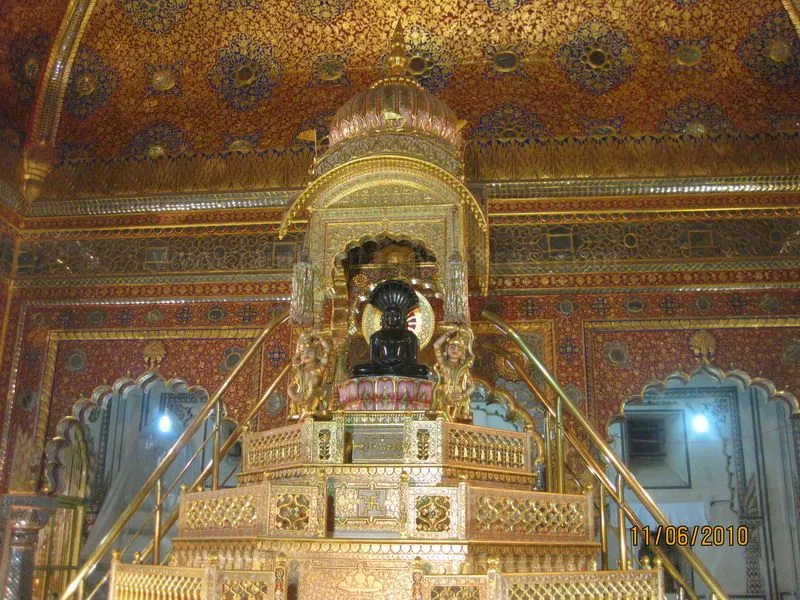
2. Sonagiri Temples
Sonagiri is a sacred Jain pilgrimage site located near Datia in Madhya Pradesh. It is known for its cluster of Jain temples and is particularly revered by the Digambara sect of Jainism. Here is some information about Sonagiri Ji Temple:
1.Location: Sonagiri is situated about 15 kilometers from the city of Datia and approximately 60 kilometers from Gwalior in Madhya Pradesh.
2.Historical Significance: Sonagiri holds immense historical and religious significance for Jains. It is believed to be a place where around 91 Jain temples are located on a single hill. The site has a history dating back to thousands of years, and it is associated with various Jain Tirthankaras.
- Temple Complex: The main attraction of Sonagiri is the hill itself, which is dotted with beautifully crafted Jain temples made of white marble or stone. These temples are dedicated to various Tirthankaras. The temple complex is spread over two hills, with the main cluster on one hill and a few more temples on the adjacent hill.
2. Spiritual Practices: Sonagiri is particularly significant for the Digambara Jains, who follow the tradition of sky-clad (nude) monks. The temple complex has facilities for the monks and nuns who come here for meditation and spiritual practices. Visitors can also witness the profound austerity and meditation of the Jain ascetics.
3. Annual Fair: Sonagiri hosts an annual fair during the Kartik Purnima (full moon day in the month of Kartik, usually in November). During this time, the temple complex attracts a large number of devotees and tourists.
4. Pilgrimage: Sonagiri is a popular pilgrimage site for Jains who come to pay their respects, seek blessings, and engage in religious practices.
5.Peaceful Environment: The serene and tranquil environment of Sonagiri, surrounded by lush greenery and away from the hustle and bustle of the city, makes it an ideal place for meditation and introspection.
6. Photography: Photography enthusiasts also appreciate Sonagiri for its beautiful temple architecture and the opportunity to capture the spiritual ambiance.
Visiting Sonagiri Ji Temple offers not only a religious experience but also a chance to appreciate the architectural beauty of the Jain temples and witness the austere lifestyle of Jain ascetics. It is a place where visitors can find solace and spiritual inspiration amidst the natural beauty of the region.
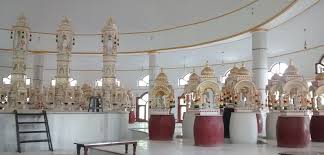
3. Shri Digambar Jain Siddha Kshetra, kundalpur
Shri Digambar Jain Siddha Kshetra Kundalpur is one of the most significant Jain pilgrimage sites in Madhya Pradesh and indeed in all of Jainism. It holds immense religious and historical importance for the Jain community. Kundalpur is associated with Lord Parshvanath, the 23rd Jain Tirthankara, and it is believed to be the place where he attained Nirvana (enlightenment) under a mango tree.
Key features and information about Shri Digambar Jain Siddha Kshetra Kundalpur:
- Location: Kundalpur is located in the Nalanda district of Bihar, not in Madhya Pradesh as mentioned in your previous question. My previous response provided information about Jain temples in Madhya Pradesh, but Kundalpur is actually in Bihar.
- Historical Significance: Kundalpur is revered because it is believed to be the birthplace of Lord Parshvanath and the place of his spiritual awakening. It is also the spot where he achieved Kevala Jnana (omniscience) under the famous mango tree, which is still preserved within the temple complex.
- Temple Complex: The Kundalpur temple complex houses several Jain temples, including the main Parshvanath Temple, which is dedicated to Lord Parshvanath. The architecture and design of these temples are awe-inspiring, with intricate carvings and exquisite artwork.
- Annual Pilgrimage: Kundalpur attracts thousands of Jain pilgrims every year, especially during the Parshvanath Janma Kalyanak Mahotsava (birth anniversary) when grand celebrations and religious rituals take place.
- Practices: The temple follows the Digambara tradition of Jainism, where monks practice nudity as a means of spiritual purification. The temple complex also includes facilities for the monks and pilgrims.
- Significant Events: Kundalpur hosts various religious and cultural events throughout the year, including religious discourses, meditation sessions, and seminars on Jain philosophy.
- Accommodation: There are accommodations available for pilgrims visiting Kundalpur, making it easier for them to stay and participate in religious activities.
Kundalpur is not only a place of religious importance but also a center for the preservation of Jain heritage and culture. It continues to attract Jain devotees and scholars from around the world who come to pay their respects and seek spiritual enlightenment.
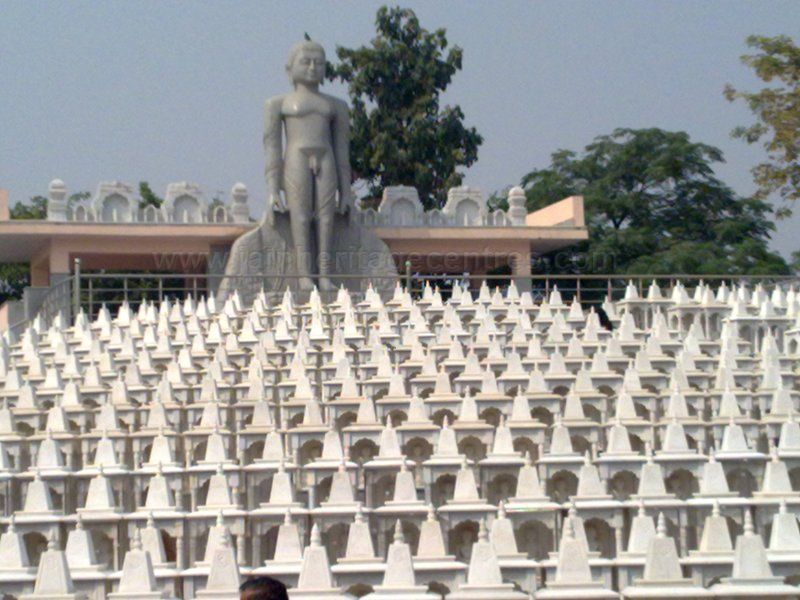
4. Shri Chintamani Parshvanath Jain Shwetamber Mandir, Sagar
The Shri Chintamani Parshvanath Jain Shwetamber Mandir is a prominent Jain temple located in Sagar, a city in the Indian state of Madhya Pradesh. This temple is dedicated to Lord Parshvanath, the 23rd Tirthankara in Jainism. Here is some information about the Shri Chintamani Parshvanath Jain Shwetamber Mandir in Sagar:
- Location: The temple is situated in the heart of Sagar city, making it easily accessible to both locals and visitors.
- Architectural Style: The Shri Chintamani Parshvanath Jain Shwetamber Mandir is known for its stunning architectural design and intricate artwork. Jain temples are often characterized by their exquisite carvings and use of white marble, and this temple is no exception.
- Religious Significance: As a Jain temple, it holds immense religious significance for the Jain community. Devotees visit the temple to offer prayers, seek blessings, and engage in various religious rituals and ceremonies.
- Idol: The main deity of the temple is Lord Parshvanath, who is one of the most revered figures in Jainism. The idol of Lord Parshvanath is often adorned with intricate jewelry and decorations.
- Spiritual Atmosphere: The temple provides a serene and peaceful atmosphere for meditation and spiritual contemplation. Many visitors come here to experience a sense of tranquility and inner peace.
- Festivals: Like many Jain temples, the Shri Chintamani Parshvanath Jain Shwetamber Mandir celebrates important Jain festivals with great enthusiasm. These festivals often involve religious processions, prayers, and cultural programs.
7. Open to All: Jain temples are typically open to people of all faiths, and visitors are welcome to explore the temple and appreciate its architectural and spiritual aspects.
8. Community Activities: The temple often serves as a center for various community and charitable activities, reflecting the Jain principle of non-violence (ahimsa) and compassion.
The Shri Chintamani Parshvanath Jain Shwetamber Mandir in Sagar is not only a place of worship but also a cultural and spiritual landmark in the city. It offers visitors an opportunity to learn about Jainism, admire the beauty of Jain temple architecture, and experience a sense of serenity in a bustling city.
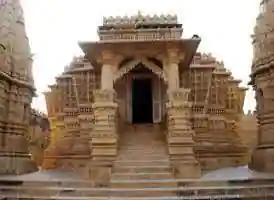
5. Bawangaja Jain Temple:-
Bawangaja Jain Temple, also known as the Bawangaja Tirth, is a significant Jain pilgrimage site located in the Barwani district of Madhya Pradesh, India. This temple is renowned for its massive monolithic statue of Lord Rishabhanatha (also known as Lord Adinatha), the first Tirthankara of Jainism. Here’s some information about the Bawangaja Jain Temple
- Location: Bawangaja is situated in the Barwani district of southwestern Madhya Pradesh, near the border with the state of Gujarat. The temple complex is located atop a hill surrounded by lush green forests.
- Monolithic Statue: The main attraction of Bawangaja Jain Temple is the colossal monolithic statue of Lord Rishabhanatha. This statue is carved out of a single piece of granite and stands at an impressive height of approximately 84 feet (25.6 meters). It is considered one of the tallest Jain statues in the world.
- Religious Significance: Bawangaja is a revered pilgrimage site for Jains, particularly those belonging to the Digambara sect. The temple complex is dedicated to Lord Rishabhanatha, the first Tirthankara of Jainism, and is an important place of worship and reverence for Jains.
- Architectural Features: The temple complex also includes smaller temples and shrines, and the architecture reflects the traditional Jain style with intricate carvings and decorative elements. The monolithic statue of Lord Rishabhanatha is adorned with intricate details and is a marvel of ancient craftsmanship.
- Accessibility: To reach the temple, visitors typically have to climb a series of steps that lead to the hilltop. The journey to the temple offers picturesque views of the surrounding natural beauty.
- Spiritual Environment: Bawangaja offers a serene and spiritual environment that is conducive to meditation and introspection. It is a place where devotees come to seek solace and connect with their faith.
- Festivals: The temple celebrates various Jain festivals with devotion and enthusiasm. During special occasions, the temple complex comes alive with religious processions, prayers, and cultural programs.
- Accommodation: Facilities for pilgrims and visitors are available near the temple, including guesthouses and dharamshalas (rest houses) where guests can stay.
Bawangaja Jain Temple is not only a place of religious significance but also a testament to the ancient Jain heritage and architectural prowess. It attracts devotees, tourists, and scholars interested in exploring Jainism and admiring the remarkable statue and natural beauty of the region.
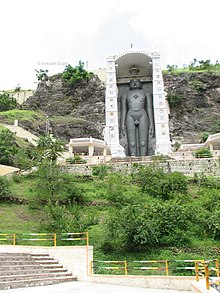
More from our blog
See all postsRecent Posts
- Mangi Tungi, Maharashtra: A Spiritual and Natural Gem of Western India September 14, 2023
- Kashmir:- The Heaven On Earth September 14, 2023
- Gommateshwara Bahubali Temple, Karnataka: A Spiritual Oasis of Serenity and Grandeur September 14, 2023

